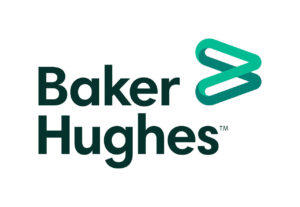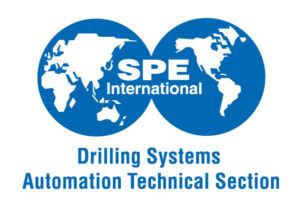Drilling Systems Digitalization and Automation – listing of organizations covering this topic.
Many initiatives are underway or will start that address challenges relevant to digitalization and automation of drilling and wells. Knowing the roles of these various (volunteer) organizations has high value for following relevant developments.
The list below (April 2022) contains industry organizations known to be working drilling digitalization and automation initiatives.
Organizations are identified by their continuous purpose. Initiatives are described by their title, objective(s) and status.
SPE DSATS – (Drilling Systems Automation Technical Section) accelerate the development and implementation of systems automation in the well drilling industry by supporting initiatives which communicate the technology, recommend best practices, standardize nomenclature and help define the value of drilling systems automation.
- DDQUD – (Drilling Data Quality and Uncertainty Description) to increase the awareness and understanding in the drilling community on how to describe drilling data quality and uncertainty. Chartered by SPE DSATS, DUPTS and WPTS.
- Drillbotics – an international competition for universities to design and build a small drilling rig that uses sensors and control algorithms to autonomously drill a rock sample provided by SPE’s Drilling Systems Automation Technical Section (DSATS). Chartered by SPE DSATS.
- D-WIS – (Drilling and Wells Interoperability Standards) establish recommended practices and standards that enable interoperability between all components, equipment and systems used in oil and gas well construction – regardless of the type or provider. Chartered by SPE DSATS.
- OSDC – (Open Source Drilling Community) a coalition of industry and academic leaders to support an open-source effort for drilling, to encourage the reuse of ever-improving models and code. Chartered by SPE DSATS.
IADC ART – (Advance Rig Technology committee) provide information and guidelines to improve safety and reliability of the interfaces between human and machine, and between multiple control systems.
- DCS (Data, controls and sensors) & Maintenance Committees Sensor Stewardship Guideline. Objective is to develop sensor stewardship guidelines to enable drilling contractors and service providers to deliver high integrity and reliable data. Status – issued to industry.
- DCS DDR Plus™ is a print and electronic data collection system aimed at securing accurate and relevant drilling data that industry can use to assess performance against drilling Key Performance Indicators. Distributors include IDS (now SLB), NOV. M/D Totco, Infostat, Oilfield Instrumentation, Pason Systems, Apriside, Kwantis. Licensees include SeaDrill, Shelf Drilling, Tribollgas,, Valaris, Transocean.
DSA Roadmap – (Drilling Systems Automation Roadmap) a cross-industry effort launched in June 2013 to provide insights to industry participants and non-industry participants regarding the adoption of advancements in drilling systems automation for both onshore and offshore oil and gas wells.
DSABOK – (Drilling Systems Automation Body of Knowledge) disseminate Drilling Systems Automation (DSA) knowledge directly or through linkages to various industry recognized websites.
SPE WPTS – (Wellbore Position Technical Section) to produce and maintain standards for the industry relating to wellbore survey accuracy.
- ISCWSA – (Industry Steering Committee on Wellbore Survey Accuracy) produces, maintains, and publishes standards for the industry, promoting a collaborative understanding of issues associated with wellbore surveying. Affiliated with SPE WPTS.
SPE DUPTS – (Drilling Uncertainty Prediction Technical Section) to provide international multidisciplinary forum for technical discussion and a consensus-based arena related to drilling uncertainty & prediction, which focuses mainly on artificial intelligence, machine learning and data science solutions supporting drilling planning and execution challenges.
OGDQ – (Operators Group for Data Quality) further the state of the art of operational data and data systems which are material to the construction and servicing of oil and gas wellbores.
- OGDQ with IADC ART. Field Verification of Rig Instrumentation for Oil and Gas Well Drilling Operations (API 8). Objective to provide recommended practices for the development of field verification procedures for critical drilling rig devices used in drilling operations. Status – in process and out for voting on Rotary Torque, Make Up Torque, Hook Load, Rotational Speed, Block Position, Pressure, Pump Rate Output.
Open Group OSDU Forum – (Open Subsurface Data Universe) delivers an Open Source, standards-based, technology-agnostic data platform for the energy industry that stimulates innovation, industrializes data management, and reduces time to market for new solutions.
- Energistics – global consortium that facilitates the development of data exchange standards for the upstream oil and gas industry. Now part of The Open Group.
- Wells Data Foundation. Integrate Operational and Engineering data to optimize well planning, design, development, and execution.
- Well Planning DDMS. Well planning Data Domain Management Service (DDMS) is the development of services for handling well construction related domain data in OSDU.
- Wellbore DDMS. Wellbore Data Domain Management Services (DDMS) is one of the several backend services that comprise Exploration and Production (E and P) software ecosystem. It is a single, containerized service written in Python that provides an API for wellbore related data.
PPDM – (Professional Petroleum Data Management association) global, not-for-profit society within the petroleum industry that provides leadership for the professionalization of petroleum data management through the development and dissemination of best practices and standards, education programs, certification programs and professional development opportunities.



